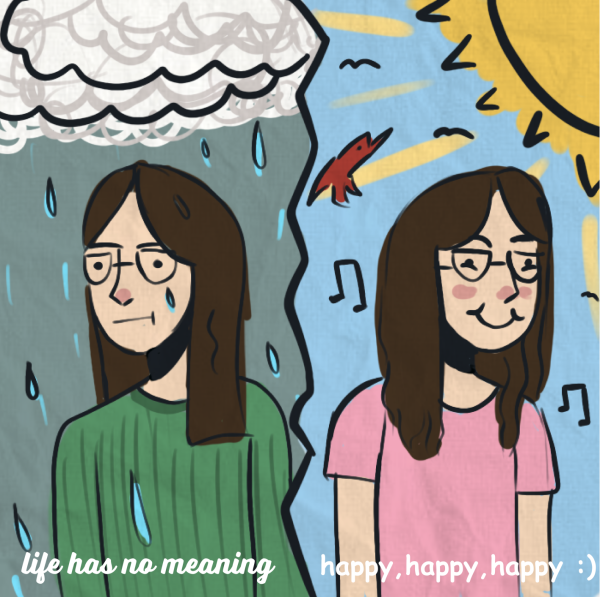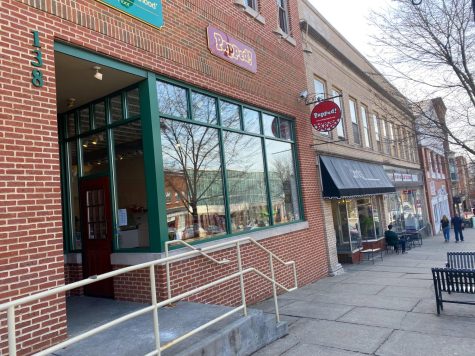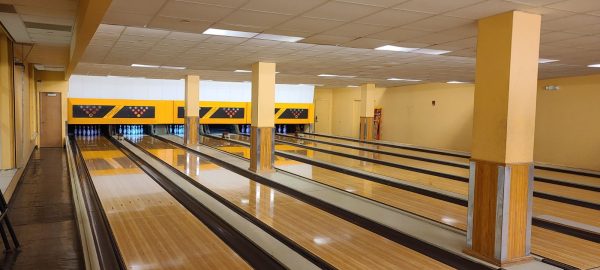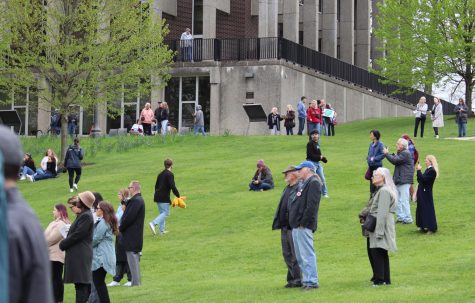Online education gaining popularity
February 9, 2006
Click here to earn a high school diploma online!
It takes a lot more than one click, but online education is becoming a popular trend with pre-college students for many reasons.
Amber Wallace, freshman computer science major, enrolled in the Electronic Classroom of Tomorrow, completed high school in two years with a 4.0 GPA and became a full-time Kent State student at age 16.
The Electronic Classroom of Tomorrow was the nation’s first online school to have kindergarten through 12th grade, and the state’s first online school in 2000, said Nick Wilson, director of communications for the Classroom.
The Classroom is a charter school, so it does not charge tuition. It runs off of state-allocated funds and is sponsored by the Lucas County Educational Service Center.
There is no common reason why students choose to get their education online.
“I have been here since 2001, and after the first year I thought I had heard everything,” Wilson said. “But every week someone comes up with a new reason for choosing the Classroom. (It) is not home schooling. It is public education at home, which may sound the same, but normally parents who homeschool do so because they have something against public education.”
Wilson said he has had students graduate from the Classroom with stage-four cancer, behavioral problems, intense athletic training and travel schedules. Others were victims of bullying or wanted to graduate early.
Some homeschooling parents enroll their children at the Classroom so they can use state-approved curriculum and avoid writing their own, Wilson said. This is an especially common reason in elementary levels where parent participation is necessary. But because the high school has so many students, home-schooling counts for less than 10 percent of their enrollment.
Older students at the Classroom have to be self-motivated to succeed, Wilson said.
“Really I did it just to see if I could,” Wallace said. “I got bad grades in public school just because I didn’t care what we were being taught.”
The Classroom offers more computer programming and science classes than other schools. Its online format also gives art and a gym classes an interesting twist.
“Students are allowed to participate in a community basketball program or other activity, keep a log of their physical activity and earn credit,” Wilson said. “Art students work on their art at home and scan it or mail it in to be graded.”
The Classroom has more than 7,000 students and accepts students of all learning levels from any district in Ohio. Other online schools are created by school districts to accommodate students who might otherwise not get a formal education.
The Akron Digital Academy is an online charter school sponsored by Akron Public Schools. Its goal is to motivate students and send them back to a traditional classroom at or above their respective grade levels, said Robert DeLaura, dean of students for Akron Digital Academy.
“If students get too far behind, they’re a disaster waiting to happen,” DeLaura said. “We build their confidence so they can return to the classroom if they choose to, and we recommend that.”
The digital academy was formed in an attempt by Akron Public Schools to compete with similar online charter schools. It runs on about $3.5 million state-allocated dollars a year and returns all profits back to the district, which amounts to about $700,000 a year, Executive Director Neil Quirk said.
The Akron Digital Academy is the only school in Ohio considered an online institution that requires students to attend twice-weekly workshops for instruction. It has about 600 students, 100 of whom are in elementary levels.
The Classroom sets up four conferences a year all around the state so students can have a chance to meet with their teachers, Wilson said. State law requires face-to-face or telephone interaction between teachers and students. The Classroom’s students communicate with their teachers mainly through e-mail and telephone.
“We feel teachers and students actually have a more open line of communication here than in a traditional classroom,” Wilson said. “It sounds counter-intuitive coming from an online school, but kids who wouldn’t normally raise their hands in a classroom of 30 students can just shoot their teacher an e-mail if they have a question.”
Marilyn Keith, Akron Digital Academy’s elementary education director, agrees communication is one of the benefits of an online education. The digital elementary school is in its second year. Grades 6-12 have been online for five years.
“After being in a traditional classroom for 20 years, I would have to say we have better communication with parents here than in a regular school,” Keith said. “It’s not like we waited until midterm to tell parents that their child is behind. They know everyday.”
The digital academy provides orientation and online safety courses before starting state-approved curriculum. The Classroom and Akron Digital Academy use their funds from the state to provide a computer, scanner and Internet connection to all students.
Both schools also have tech-help hotlines. If Classroom students have trouble with a machine, a delivery service takes the computer and ships them a new one within 24 hours, Wilson said.
Contact public affairs reporter Sean Joseph at [email protected].























